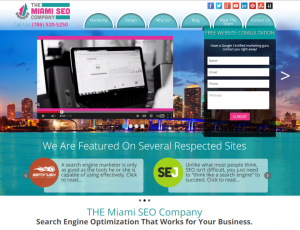 It’s easy to get caught up counting followers, likes, re-Tweets, and other short-term indicators of a budding social media presence. While those “metrics” provide immediate gratification, they have less tangible impact in driving business value (awareness, funnel advancement, pipeline) and personal brand equity.
It’s easy to get caught up counting followers, likes, re-Tweets, and other short-term indicators of a budding social media presence. While those “metrics” provide immediate gratification, they have less tangible impact in driving business value (awareness, funnel advancement, pipeline) and personal brand equity.
Before you commit time and resources, I recommend a disciplined – even skeptical – approach to building a social media strategy, with frequent checkpoints to assure ROI. What follows – in Part 1 of two blogs – is a four-step social media success plan I’ve executed over the past two years that has driven significant growth in:
- Visibility and engagement with prospects for Integrate,
- Business impact in the form of new or expanded customer relationships, and
- Personal brand advancement.
Step 1: Identify your business goal(s) and target “customer”
Like any ROI-focused marketing strategy, you should start a social media initiative with clear documentation of your business goals. These could range from thought leadership via dissemination of messages supporting current sales plays to selling product (an outcome that’s more likely in a B2C setting).
But here’s where the skepticism must come in. Once you document your goals, run them by a seasoned social media expert to determine their viability. If they’re not attainable, go back to the drawing board or consider focusing elsewhere. Also, take your most modest forecast, reduce it by half, then ask yourself whether stakeholders will support such a reduced (and likely) outcome.
Concrete definition of business goals also includes identifying the customer and building a plan to reach that customer. If you’re targeting vice presidents of sales and your research (as well as experience) indicates that persona is not active in Facebook, be sure NOT to expend significant cost and energy on Facebook.
Instead, use persona insight to direct social activities to the channels and media with the highest concentration of qualified prospects. Follow the Marketing 101 textbook: Target, target, then target more. Just remember there has to be a target to hit.
Step 2: Remember there are no shortcuts to success
The best starting point to engaging potential targets is to start quietly, observing how, when and why they engage, and what types of insights elicit their involvement.
In this stage, it’s assumed you’ve determined where they participate in social media (if at all). Then it’s time to monitor that activity, determine the groups or thought leaders they follow and do the same yourself. Find out what topics make these individuals tick. Get a handle on the content or discussions that they will jump in on; those are probably a good indicator of the types of problems they wrestle with, as well as the issues your content should address.
Armed with that knowledge, use available venues – LinkedIn groups come quickly to mind – to reach out and seek connections with target customers. This is the beginning of what you hope will be a conversation.
The most critical point to remember: this is NOT an immediate-payoff undertaking, and those you succeed in engaging with won’t be cutting checks overnight. The process starts and builds slowly – much like the B2B selling cycle itself. You need the patience – and existing pipeline – to follow the process in order to build relationships that will impact your pipeline one day in the future while you pursue current opportunities today.
Step 3: Develop, select content that works in a social context
Social media requires content that makes sense in the specific network you’re targeting. Facebook and Twitter users, for example, are extremely receptive to photos and videos – users of these sites consume lots of them. LinkedIn, too, is friendly to videos and slideshows, and increasingly it’s a good place for blogs, as well as Twitter-like commentary.
The format, the medium and the delivery mechanism are all highly relevant – and variable – by the social platform you elect to utilize.
The content must have value for the recipient or follower, and it CANNOT be brand-centric. Social media is a haven for millennials who have little patience for content and messages that aren’t optimized for them: the prevailing social media practice is to quickly tune out self-serving messages. Deliver value, or watch your social media investment wither on the vine.
Step 4: Evaluate organic AND paid social activities
Most likely there’s an inherent bias toward organic social posts – think Twitter, Facebook and LinkedIn – to drive top-of-funnel engagement with prospects on a social basis. And that’s a perfectly valid approach, albeit one whose value can be challenging to quantify.
You owe it to yourself to consider paid campaigns – think paid Facebook ads, sponsored Tweets, or LinkedIn sponsored content campaigns – to achieve engagement with granular targeting by title, industry, geography and other demographic variables.
As content marketing expert Cheryl Goldberg remarked in her LinkedIn Pulse article published earlier this morning, many marketers “are finding that a paid strategy is an essential complement to their organic social strategy,” due to its ability to provide a higher level of reach, targeting, and conversion than organic efforts.
I can attest to Cheryl’s comments from first-hand experience: I’ve seen cases where targeting can produce excellent event attendee rosters at a lower cost than many other prospect acquisition campaigns, as well as respectable attendance rates. It’s incumbent on you to find an economical balance between organic and paid social activities.
Next post: How to measure, adapt, and evolve your strategy, post launch.
(217)








